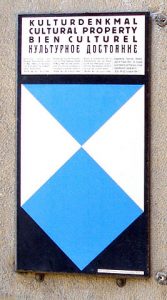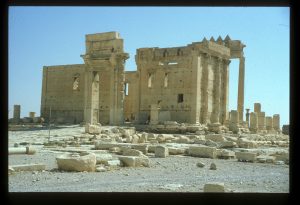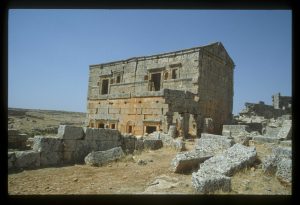Dr Nigel Pollard welcomes the new UK Cultural Property Act
On Thursday 23rd February 2017, the Cultural Property (Armed Conflicts) Bill 2016-2017 received the Royal Assent and so became an Act of Parliament. This was a big moment for me, as I’ve been part of lobbying efforts to achieve this for the last five years as a board member of the UK National Committee of Blue Shield. The key provision of the Act is that the UK will finally ratify the 1954 Hague Convention on the protection of cultural Property in the Event of Armed Conflict, and its two Protocols, of 1954 and 1999. ‘Cultural Property’ in this sense includes monuments, sites and buildings, museums, galleries , libraries, archives and their contents ‘of great importance to the cultural heritage of every people’.

Damage to cultural property has been long-standing feature of wars and internal conflicts throughout history, and has been subject to considerable scrutiny in recent decades, through conflicts in Yemen, Syria, Iraq, Mali, Libya, Egypt and the former Yugoslavia. This is the result of deliberate, ideologically motivated attacks on cultural property associated with other cultures and religions, accidental damage caused by insufficient care and respect for cultural property when conducting military operations, failure of occupying armed forces to safeguard cultural sites and property for which they are responsible, and looting of unprotected sites and collections in conflict zones for the illicit antiquities trade.

The UK, like the USA, didn’t ratify the original 1954 Hague Convention for political and military reasons associated with its Cold War context, and while the UK claimed to work within the spirit of the Convention (for example, at the time of the 2003 invasion of Iraq), it is the last country with extensive military involvements abroad to ratify it. Passing of the Act and ratification of the Convention will be important symbolic steps in demonstrating the UK’s commitment to the protection of cultural property as well as having practical implications. For example, violations of the Convention and its protocols will be recognised as offences in UK law, and legal sanctions relating to dealing in ‘unlawfully exported cultural property’ will be strengthened. The UK is preparing an inventory of its own cultural property for the purposes of protection, and potentially some buildings may be marked with the Blue Shield emblem for protection, already in use in some countries such as Austria. Another requirement of the Convention is that the UK is establishing a special unit within the armed forces for the protection of cultural property, inevitably popularly dubbed the ‘New Monuments Men’ after the Anglo-American Allied Monuments, Fine Arts and Archives Sub-Commission of the Second World War, popularised by the 2014 George Clooney film. In addition, the UK set up a £30 million Cultural Protection Fund to fund projects and initiatives in this field in 2016, after consultation with heritage specialists including myself.

I became interested in this issue through my research relating to damage to archaeological sites such as Pompeii in the Second World War, and the history of the ‘Monuments Men’ organisation. For that reason I played a role in the re-establishment of the UK National Committee of Blue Shield in 2012. However, as an archaeologist, much of my past research and fieldwork related to Roman Syria, so the intensification of the civil war there involved me more and more in contemporary efforts to preserve heritage sites in conflict zones. I have digitised many of my images of archaeological sites in Syria that have been damaged in the conflict as a contribution to their preservation for research and teaching.
Written by Dr Nigel Pollard
For further information, see:
http://services.parliament.uk/bills/2016-17/culturalpropertyarmedconflicts.html
https://endangeredsyriaheritage.wordpress.com/
https://www.britishcouncil.org/arts/culture-development/cultural-protection-fund
